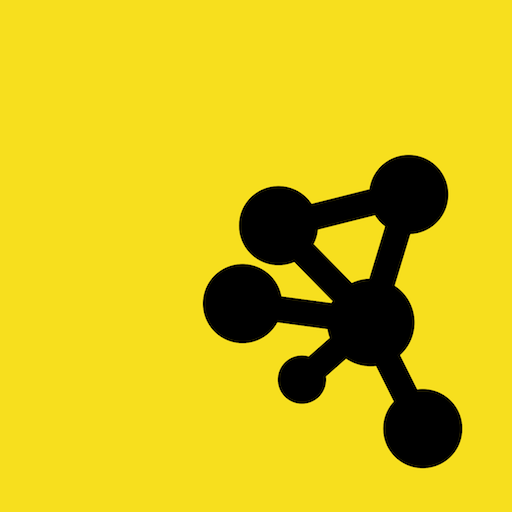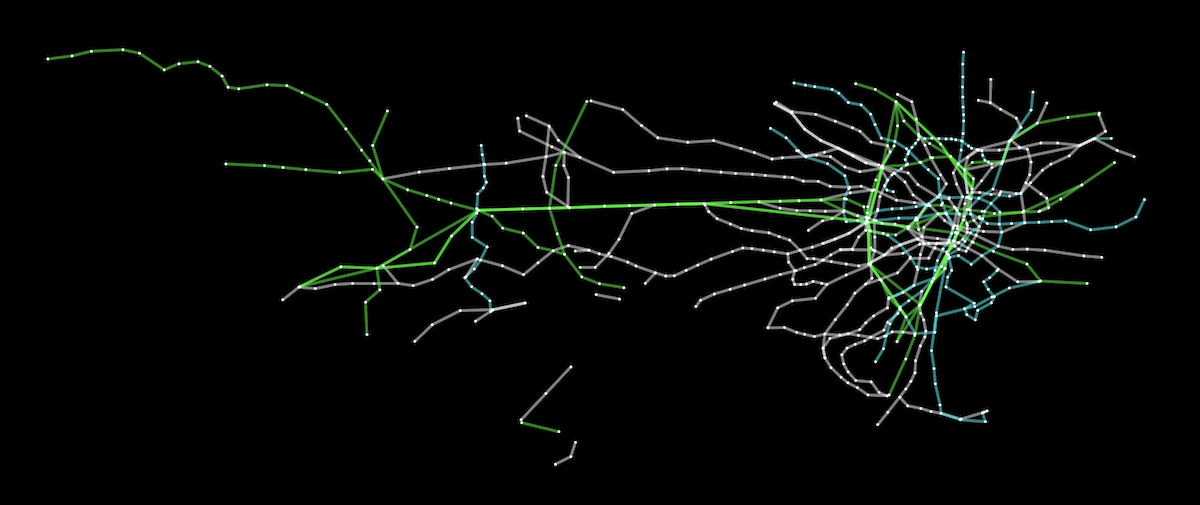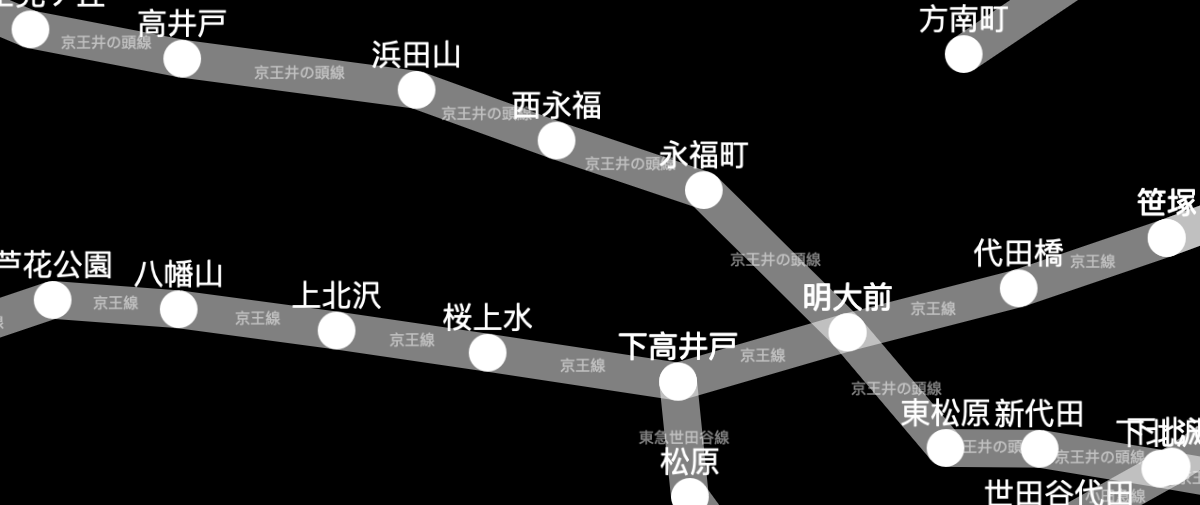Graph theory (network) library for visualisation and analysis : https://js.cytoscape.org
Cytoscape.js is a fully featured graph theory library. Do you need to model and/or visualise relational data, like biological data or social networks? If so, Cytoscape.js is just what you need.
Cytoscape.js contains a graph theory model and an optional renderer to display interactive graphs. This library was designed to make it as easy as possible for programmers and scientists to use graph theory in their apps, whether it's for server-side analysis in a Node.js app or for a rich user interface.
You can get started with Cytoscape.js with one line:
var cy = cytoscape({ elements: myElements, container: myDiv });Learn more about the features of Cytoscape.js by reading its documentation.
The Tokyo railway stations network can be visualised with Cytoscape:
A live demo and source code are available for the Tokyo railway stations graph. More demos are available in the documentation.
You can find the documentation and downloads on the project website.
Future versions of Cytoscape.js are planned in the milestones of the Github issue tracker. You can use the milestones to see what's currently planned for future releases.
Would you like to become a Cytoscape.js contributor? You can contribute in technical roles (e.g. features, testing) or non-technical roles (e.g. documentation, outreach), depending on your interests. Get in touch with us by posting a GitHub discussion.
For the mechanics of contributing a pull request, refer to CONTRIBUTING.md.
Feature releases are made monthly, while patch releases are made weekly. This allows for rapid releases of first- and third-party contributions.
To cite Cytoscape.js in a paper, please cite the Oxford Bioinformatics issue:
Cytoscape.js: a graph theory library for visualisation and analysis
Franz M, Lopes CT, Huck G, Dong Y, Sumer O, Bader GD
Install node and npm. Run npm install before using npm run.
Run npm run <target> in the console. The main targets are:
Building:
build: do all builds of the library (umd, min, umd, esm)build:min: do the unminified build with bundled dependencies (for simple html pages, good for novices)build:umd: do the umd (cjs/amd/globals) buildbuild:esm: do the esm (ES 2015 modules) buildclean: clean thebuilddirectorydocs: build the docs intodocumentationrelease: build all release artifactswatch: automatically build lib for debugging (with sourcemap, no babel, very quick)- good for general testing on
debug/index.html - served on
http://localhost:8080or the first available port thereafter, with livereload ondebug/index.html
- good for general testing on
watch:babel: automatically build lib for debugging (with sourcemap, with babel, a bit slower)- good for testing performance or for testing out of date browsers
- served on
http://localhost:8080or the first available port thereafter, with livereload ondebug/index.html
watch:umd: automatically build prod umd bundle (no sourcemap, with babel)- good for testing cytoscape in another project (with a
"cytoscape": "file:./path/to/cytoscape"reference in your project'spackage.json) - no http server
- good for testing cytoscape in another project (with a
dist: update the distribution js for npm etc.
Testing:
The default test scripts run directly against the source code. Tests can alternatively be run on a built bundle. The library can be built on node>=6, but the library's bundle can be tested on node>=0.10.
test: run all testing & lintingtest:js: run the mocha tests on the public API of the lib (directly on source files)npm run test:js -- -g "my test name"runs tests on only the matching test cases
test:build: run the mocha tests on the public API of the lib (on a built bundle)npm run buildshould be run beforehand on a recent version of nodenpm run test:build -- -g "my test name"runs build tests on only the matching test cases
test:modules: run unit tests on private, internal APInpm run test:modules -- -g "my test name"runs modules tests on only the matching test cases
lint: lint the js sources via eslintbenchmark: run all benchmarksbenchmark:single: run benchmarks only for the suite specified inbenchmark/single
- Ensure the docs are updated with the list of releases you would like to make in
documentation/md/intro.md(on bothmasterandunstablebranches). Push the changes. - Ensure that milestones exist for the releases that you would like to make. Each milestone should contain its corresponding issues and pull requests.
- For patch releases, do the back-port patch release before the corresponding current release. This ensures that npm lists the current version as the latest one.
git checkout 1.1.x, e.g. if the previous feature release is 1.1- Follow the remaining ordinary release steps (step 5 and onward).
- Current releases are based on the
masterbranch:git checkout master- If you are making a patch release, you can just release
masterwith its new patches. - If you are making a feature release, you need to merge
unstableontomaster. Since there can be conflicts, it's easiest to use the 'ours' strategy which will allow you to use the state ofunstableas-is (i.e. no conflict resolution necessary):- Make sure your local
masteris up-to-date:git checkout master && git pull - Make sure your local
unstableis up-to-date:git checkout unstable && git pull - Create a merge commit that selects the state of
unstableand push it:git merge -s ours master && git push - Fast-forward
masterto the merge commit:git checkout master && git merge unstable && git push - Update the version number in
package.jsonandpackage-lock.jsononunstableto some provisional new version number, and push it.
- Make sure your local
- If you are making a patch release, you can just release
- Update the
VERSIONenvironment variable for the release number you want to make, e.g.export VERSION=1.2.3 - Confirm all the tests are passing:
npm run test- See also
test/index.htmlfor browser testing (optional)
- Confirm all the tests are passing in IE9 (for feature releases):
npm run watch:umd- Open an IE9 VM
- Open
http://yourip:8081/test/ie.htmlin IE
- Prepare a release:
npm run release - Review the files that were just built in the previous step.
- There should be a series of updated files in the
distdirectory and thedocumentationdirectory, identified withgit status. - Try out the newly-built docs and demos in your browser.
- There should be a series of updated files in the
- Add the the release to git:
git add . && git commit -m "Build $VERSION" - Update the package version and tag the release:
npm version $VERSION - Push the release changes:
git push && git push --tags - Publish the release to npm:
npm publish - Create a release for Zenodo from the latest tag. Make sure you wait at least 5 minutes since the last time that you made a release in order for Zenodo to work properly.
- For feature releases: Create a release announcement on the blog. Share the announcement on mailing lists and social media.
Mocha tests are found in the test directory. The tests can be run in the browser or they can be run via Node.js (npm run test:js).














